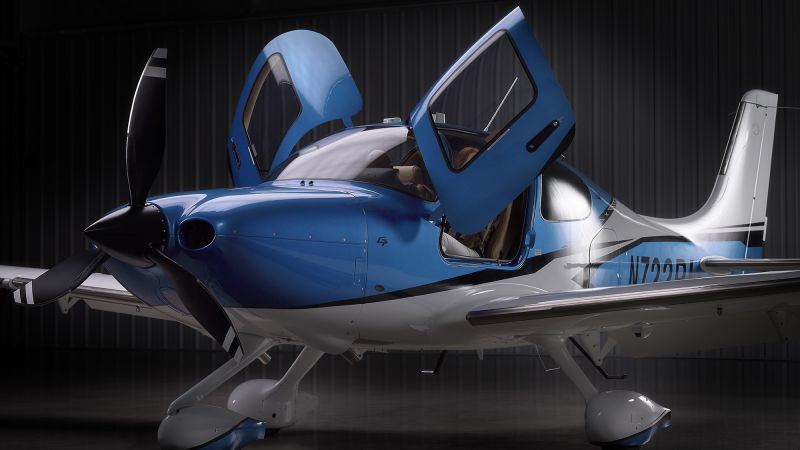Hagerstown, Maryland
CNN
—
While passenger anxieties may be experiencing an uptick, one new design aboard a small aircraft is attempting to change the future of flying when it comes to safety.
And it comes with just the push of one button.
Aircraft manufacturer Cirrus is launching the first Federal Aviation Administration-approved autonomous safety system in a single-engine piston airplane. It’s called “Safe Return,” and it is a shiny red button in the plane maker’s SR Series G7+. Cirrus first certified Safe Return in its larger and more expensive Vision Jet in August 2020.
CNN got a first-hand look at the Cirrus technology and how the planes are able to land themselves.
How can a plane land on its own?
The way it works is simple.
Takeoff is the same – passengers feel the roar of the engine as the plane is maneuvered by the pilot to the runway swiftly and cautiously. In the air, it has features just like a regular plane.
But, say there was a problem with the pilot. Now, Safe Return can step in. It comes in the form of a red button that sits overhead, closest to the passengers in the back.
One press of the button, and the plane will route itself to the closest and most available runway. It entirely takes control of the airplane.
“The first thing it does is it makes a decision,” said Ben Kowalski, senior vice president of
sales and marketing at Cirrus Aircraft, in an interview with CNN. “There’s an algorithm that decides: ‘Where should we go? What it’s doing is it’s making a choice, almost just like a pilot would.”

There’s a 10-second grace window, should the emergency button be hit on accident, when the pilot is able to disconnect it.
The aircraft’s integrated flight decks have everything it needs to make the landing: it’ll interpret the fuel state, weather, wind and more.
Air traffic controllers will also be alerted that the aircraft is having an emergency, and passengers are also able to communicate with controllers, should they need to.
Ivy McIver is the executive director of the SR Series product line at Cirrus Aircraft. She also is a pilot and flew the Cirrus plane demonstrated for CNN.
“The first time I did (an activation of Safe Return), it was sort of one of those things where on one side it was hard to give up control, but on the other side I felt so confident in the system because I had been part of the certification process and part of the flight testing that it really was just to watch the magic of engineering at work,” McIver said.
It all comes together when the plane touches down, right in the center of the runway, and comes to a stop with no one touching the controls.
Where might a Cirrus plane be used?
Cirrus, founded in 1984, calls itself a leader in “personal aviation.”
“We believe aviation makes the world better,” Kowalski said. “We’re biased, rightfully so, because we build airplanes, but we see the people that are buying and using our airplanes…, the vast majority put them into service for their business, to grow their business.”
While some may utilize a Cirrus plane for their own personal use, mostly, the company’s customers are business owners that can make use of the plane to lessen costs elsewhere.
They aren’t the typical “aviation geek” type.
“The vast majority of people who are buying Cirruses in our space, they’re not professional pilots,” he said. “They’re flying a couple times a week, maybe, so we’re constantly creating a flight deck and a user interface, things that make it easier and safer and simpler to fly.”
The company created its own Cirrus Airframe Parachute System – the first FAA-certified whole-airframe parachute safety system included as standard equipment on its planes. It allows the entire aircraft to float to the ground in case of emergency.
The future for Cirrus is simple: introduce more people to the world of aviation and make them feel comfortable with it.
“What we’ve actually done is take an airframe powered by a power plant that’s not digitally controlled or not controlled by a computer, an airframe that is kind of the entry point of aviation,” McIver explained. “People are learning how to fly in this plane, and we are producing over 600 of these a year.”
600 a year that will now have a shiny red button onboard.
“(Aviation) makes people more productive and are able to do more,” Kowalski said. “I think we’ll see this convergence in the future of as air as technologies for the airplanes keep improving, just like this.”
CNN’s Pete Muntean contributed to this report.

